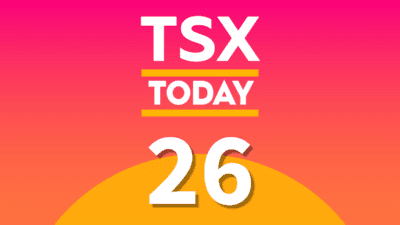By Dave Van Geem
About five years ago, my wife and I switched some of our investments over to a discount brokerage. I had heard good things about discount brokers — ease of use, online availability, access to research tools that were free to customers.
I was getting more and more interested in managing my own money and had just joined some Motley Fool advisory services. As company policy, our old broker wouldn’t allow us to trade in options — so my decision was made.
Within two years, we’d completely switched over to the new service. After reading everything I could online about options, I cautiously wrote some covered calls … and the rest is history. Since that time we’ve had very little reason to regret the decision. I say very little because a few issues have popped up that I overlooked in spite of my best efforts.
Today, I wanted to share five things I’ve learned.
1. It’s my problem, not yours!
Discrepancies, errors, or omissions must be brought up quickly. There is often a 30-day limit to raise any questions; otherwise, you waive your rights and the statement is considered correct. It doesn’t matter if the broker is at fault, nor does the size of the error matter.
I have never caught an error, but was surprised to find out we had no recourse after 30 days. The wonder of this clause is it is standard language now. I’ve seen it on my phone bill, my credit card bill – everywhere! I now open my mail promptly instead of letting it pile up for two weeks at a time.
2. Fees are evil.
OK, maybe not completely evil — everyone has to make a living. Nevertheless, I bet my old broker would have quickly caught this one. I had U.S. investments in a Canadian RRSP and the fees were quietly and effectively slaughtering my returns. Every dividend, every purchase, every drip was converted into Canadian dollars as soon as the money hit the account, and then back to $USD when we added to the position, DRIPed, or bought other U.S. equities.
I’m sure the transaction costs were fair, and the accounting was likely a nightmare for the broker, but we were still losing out on a good amount of the return. The solution was simple but time-consuming — we opened U.S.-denominated RRSP accounts. Problem solved.
3. DRIPs don’t just happen!
Many know a DRIP (Dividend Re-Investment Plan) is compound interest magic. My broker allows DRIPs for almost every Canadian security, and many of the U.S. large-cap companies. Free!
Dividends were automatically reinvested without a transaction fee. The downfall was that you had to fill out, sign, and mail in a form in order to qualify. Every time you made a purchase. For each account. Specifying the stock and the number of shares.
The paperwork was monotonous and seemingly endless, but it isn’t a full-service brokerage for a reason! The payoff is seeing my dividends converted to new shares automatically.
4. When is your summary not a summary?
When you have more than one account, your summary is not a summary.
I bet our house is like most. I have two RRSP accounts, my wife has five (a $C, $US, two at work — one for profit-sharing and one for deferred profit-sharing, and one from an old job still thankfully locked in), and we have a sizable chunk of equity tied up in our house. Many families have businesses and vacation properties as well.
Every month we all get “helpful hints” (often more than once on the same statement) from the different companies in a gently patronizing tone warning us of things like, “You have a high allocation of your investments currently in a money market fund in your DPSP. Money market funds and daily interest accounts are short-term investments that aren’t optimal for long-term retirement planning”.
This is, of course, good advice, but it doesn’t begin to cover all of my investments that they have no idea about. At least once a quarter I make a spreadsheet and roll all of our accounts into one form — it gives me an accurate idea of the whole picture by looking across accounts.
5. Sometimes an asset class is just an asset class.
This is a follow-on to the last idea. Proper portfolio diversification doesn’t come from owning a nice mix of cash, equities, mutual funds, and fixed-income investments. That is to say, you can do it that way, but it isn’t a given.
With more than 10 years until retirement in our house, we are invested in equities, cash (to buy more equities and to cover emergencies), and a house. It is the allocation of equities that gives us the necessary diversification. I don’t care what my pie chart on the statement looks like, and neither should you. I am a Foolish investor looking to hold great companies for the long term. I’m a lot more interested in achieving diversification by focusing on specific companies, industries, and countries.
As Foolish investors, we have all signed up to invest better. No matter what your personal investing style, paying attention to details can really pay off — especially if you have a long time horizon.
The Motley Fool’s purpose is to help the world invest, better. Click here now for your free subscription to Take Stock, The Motley Fool Canada’s free investing newsletter. Packed with stock ideas and investing advice, it is essential reading for anyone looking to build and grow their wealth in the years ahead.
Follow us on Twitter and Facebook for the latest in Foolish investing.







